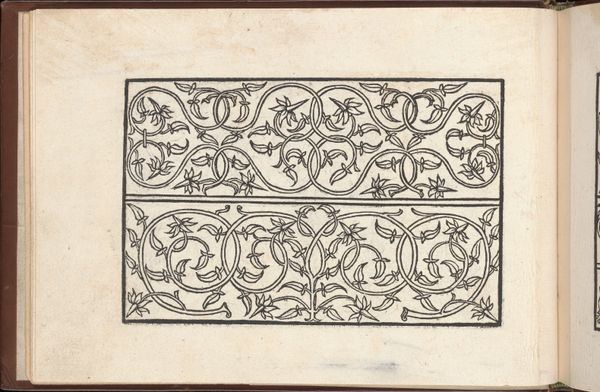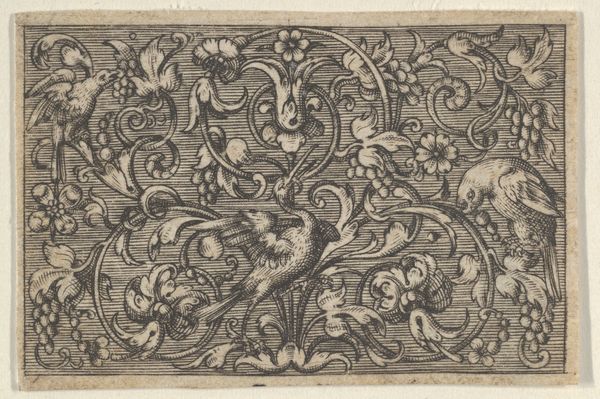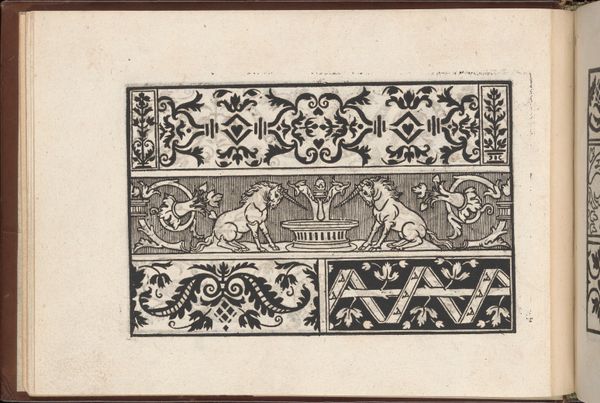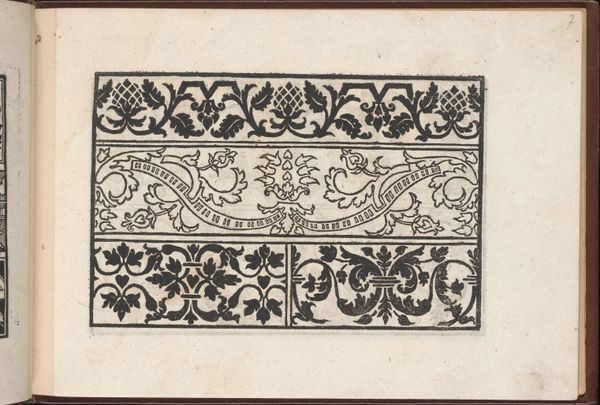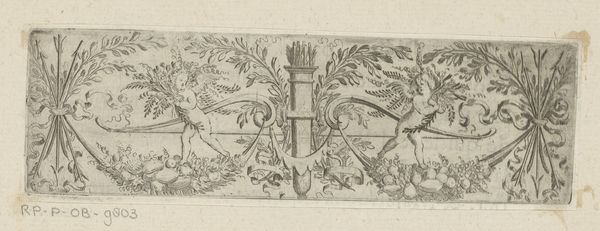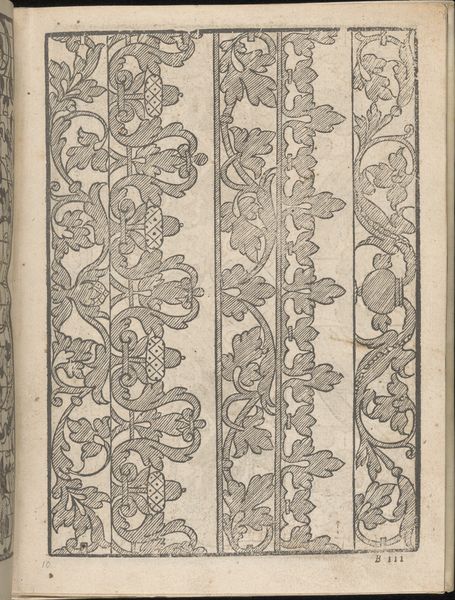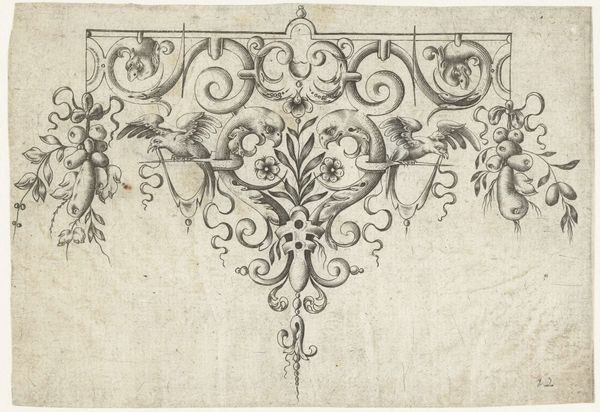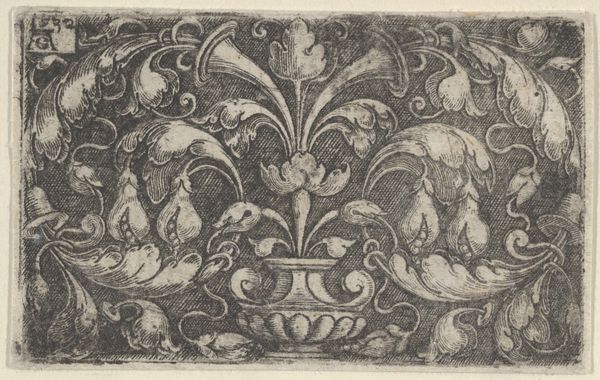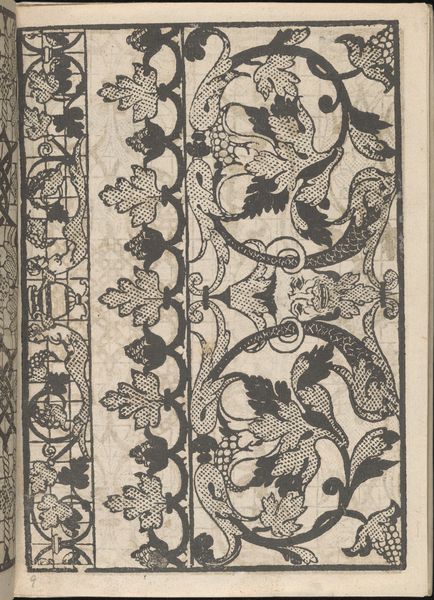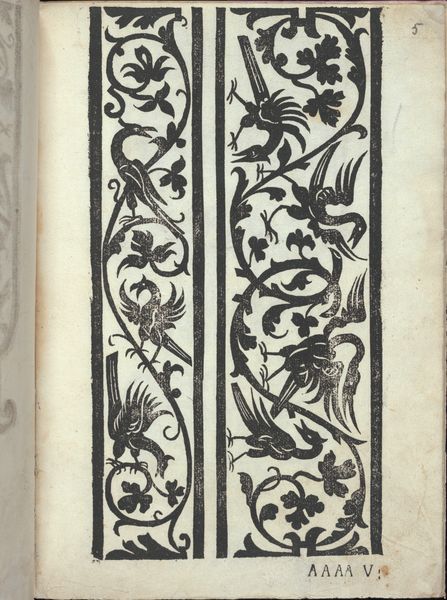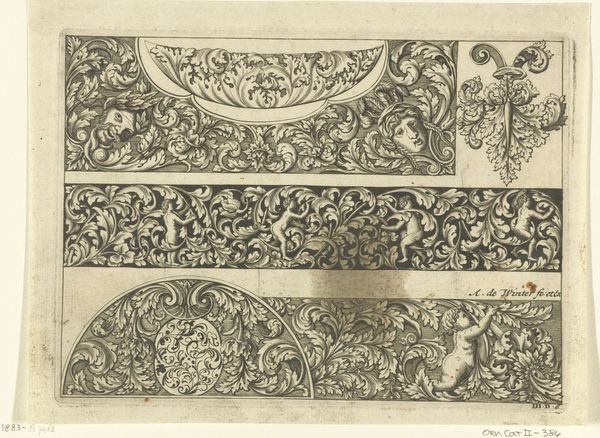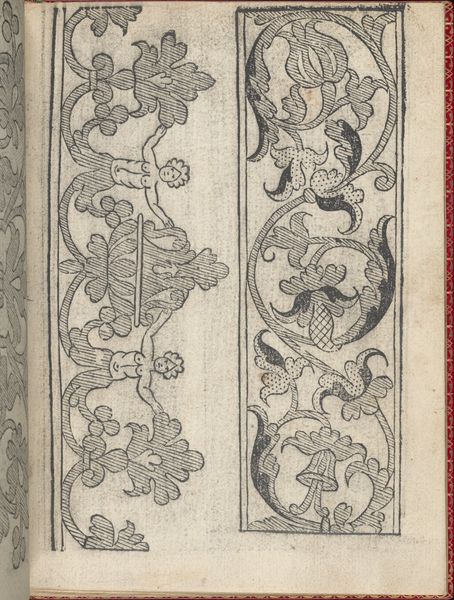
Titelhoofd met een haan en dieren verborgen in struiken 1893
0:00
0:00
drawing, print, woodcut
#
drawing
#
art-nouveau
# print
#
figuration
#
geometric
#
woodcut
#
symbolism
Dimensions: height 85 mm, width 150 mm
Copyright: Rijks Museum: Open Domain
Curator: Here we have a woodcut, "Titelhoofd met een haan en dieren verborgen in struiken," created in 1893 by Gerrit Willem Dijsselhof. The title translates to "Title Page with a Rooster and Animals Hidden in Bushes". Editor: It strikes me as somewhat unsettling, almost as if glimpsed in a dream. The stark contrast between the light paper and the dense grey print makes the image feel quite heavy, monumental even. Curator: The medium itself is integral. Woodcut printing, particularly in this era, was about accessibility. It suggests a desire to disseminate images widely, challenging the exclusivity of painting. The labor involved – the carving of the wood – becomes significant. This piece shows us labor's impact by creating simple shapes, it also democratizes its look with easily sourced medium of paper. Editor: The rooster, prominently placed, immediately brings to mind symbols of vigilance, pride, and even resurrection, rooted in both folklore and religious iconography. Are these hidden animals playing into this symbolism as well, are they like, the buried side of ego? Curator: I'm drawn to the geometric patterns used throughout. Note how Dijsselhof is melding that clean precision with organic forms of those bushes you mentioned earlier. This is very Art Nouveau of him; look closely and you can see how consumption patterns are taking a geometric spin by the industrial world taking shape at that time. Editor: Yes, the animals seemingly hiding among the foliage do contribute to a layered narrative. It feels almost like a symbolic puzzle, hinting at something concealed or perhaps in transition. Considering the prevailing symbolism in Dijsselhof’s other works and fin-de-siècle interests in psychology and the occult, that reads deeply to me. Curator: So, for me, what resonates is how a common print like this acted like a form of resistance, a pushing-back of who controlled art production in society. Editor: And for me, the allure lies in how this artist captured the elusive, ephemeral feeling from symbols we have collectively constructed. Curator: Food for thought about production, then. Editor: Yes, symbols and the people behind them.
Comments
No comments
Be the first to comment and join the conversation on the ultimate creative platform.
